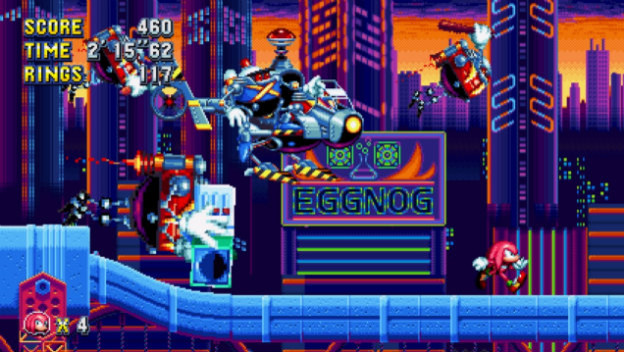OK dude, this is it. Your final, absolutely 100% LAST chance!
Nearly four years have passed since the last core Sonic the Hedgehog game. That is unprecedented restraint on the part of Sonic Team, even if you consider the abysmal, western-developed Sonic Boom games. Look, if I don’t want to count them, that’s my perogative. Something was clearly going wrong at Sonic Team, and they took a break while the whole cartoon cross-marketing thing took over to keep the Sonic the Hedgehog brand alive. Now Sonic, real, Japanese Sonic, is coming back in a big way in 2017. This time may be the last chance for Sonic to break out of its funk, but Sonic Team may have finally stumbled upon the answer.
The problem Sonic has faced over the years is a quality concern of course, but for a specific reason. It seemed like every time a new game happened, Sonic Team was trying to do something new or different. Like, as soon as a new game came out and got a mixed critical reception, everything was scrapped and a new, ridiculous gimmick was slapped on top of the franchise the following year.
This kind of approach is a problem for a few reasons. For one, it presents a brand identity crisis. If your Top Thing is always different, your demographic is never going to stabilize beyond the hardcore fanbase. Mainstream appeal doesn’t happen if the mass market can’t figure out what your brand is all about. It shows a severe lack of confidence and organization within the development studios. For so long, Sonic Team has felt out of touch.
Second, changing things around so often means there’s no room to improve or iterate. Every time a Sonic game did something people liked, that mechanic or feature was gone, replaced with something entirely different. In a few short years, Sonic went from being an action game, a brawler, an auto-runner, a Mario Galaxy clone, so on and so forth. Even the Sonic 4 series had to mess with the formula despite is ostensibly being a throwback.
Second, changing things around so often means there’s no room to improve or iterate. Every time a Sonic the Hedgehog game did something people liked, that mechanic or feature was gone, replaced with something entirely different. In a few short years, Sonic went from being an action game, a brawler, an auto-runner, a Super Mario Galaxy clone, so on and so forth. Even the Sonic 4 series had to mess with the formula despite is ostensibly being a throwback.
With Sonic Mania and Sonic Forces , Sega and Sonic Team seem to have finally come to realize the issue, and it shows. Sonic Mania is being developed by people involved with porting the classic Sonic games to various devices and is pretty much just recreating the classic formula, even down to the art style. Sonic Forces is a continuation of the Sonic Generations approach, which was the first time in a while people legitimately enjoyed a 3D Sonic game.
By taking a step back and re-examining older concepts, Sonic Team is putting itself in a favorable position for the first time in years. Sega can finally point at either project and say, “Look, it’s that thing from before that you liked; we’re doing more of it, and better.” There aren’t any resources being wasted on coming up with some kind of goofy gimmick, instead the developers are looking back before stepping forward, the kind of thing that keeps more successful mascot games like the Mario series going strong.

When a video game becomes a franchise, it is important to try new things. However, going as far as attempting to reinvent the wheel every time is not the right path. People improve through repetition, and people respond to what’s familiar as long as there’s something fresh. The classic Sonic the Hedgehog games worked because the core that made the games appealing in the first place was a stable presence, and the improvements were made around that core.
Sonic is always going to retain his basic appeal, that keeps the series alive despite the broken games and bad reviews. But this time, Sega and Sonic Team are doing what they should have done years ago. They’re taking the games that did something right and refining on those ideas. This is the biggest opportunity for success Sonic has had since the Dreamcast era. Let’s see how it goes.
